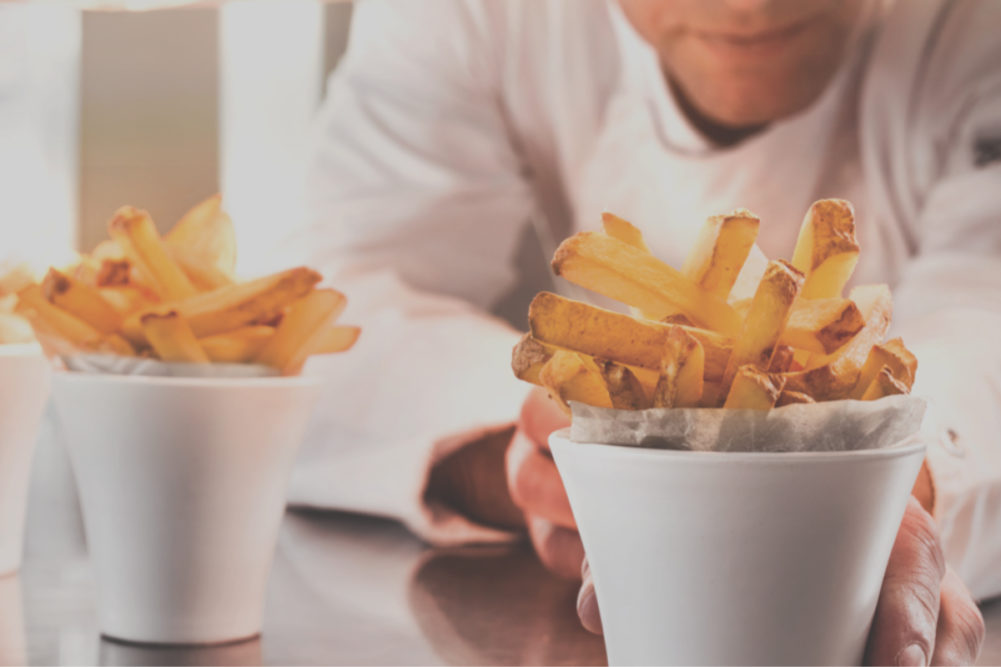EAGLE, IDAHO — Lamb Weston Holdings, Inc. is expanding. During the past five months the company has announced three significant capital projects in markets around the world that will increase its scale and capitalize on global consumer demand for value-added potato products.
On July 27, the day the company released its fiscal 2021 financial results, Lamb Weston/Meijer, a European joint venture, said it will expand production at a plant in Kruiningen, The Netherlands. The investment will cost $237 million and add approximately 390 million lbs of capacity.
Five days earlier, Lamb Weston said it will expand french fry processing capacity at its manufacturing plant in American Falls, Idaho. The $415 million investment will grow the plant’s capacity by more than 350 million lbs of frozen french fries and other potato products per year. And in March, the company outlined plans to invest $225 million in a french fry processing plant in Ulanqab, Inner Mongolia, China.
“We're making some significant investments to support long-term growth and profitability,” said Thomas P. Werner, president and chief executive officer, during a July 27 conference call to discuss fiscal 2021 results.
The investments come in the wake of what Mr. Werner called “the most challenging operating environment in our company’s history.”
“Although our results in fiscal 2021 were somewhat choppy due to the pandemic, we focus on the right near-term priorities, while making sure we continue the pursuit of our long-term strategic objectives,” Mr. Werner said. “The pandemic showed the resilience of the category and our business model, with demand in most of our Foodservice segment channels largely offset by the performance in QSR (quick-service restaurants) and at Retail.”
Net income for the year ended May 30 fell 13% to $318 million, equal to $2.17 per share on the common stock.
Annual sales dipped 3% to $3.67 billion.
Lamb Weston’s operating structure consists of three business units — Global, Foodservice and Retail. The Global and Foodservice units primarily serve foodservice and institutional operators around the world. For the year, Global unit sales fell 3% to $1.9 billion and Foodservice sales fell 5% to $1 billion. Retail sales rose 1% to $603 million.
“We're encouraged by the pace of recovery in restaurant traffic in the US,” Mr. Werner said. “While overall restaurant traffic remains below pre-pandemic levels, it's recovered much of the lost ground and continues trending in the right direction.”
He noted that overall US QSR traffic in May was down low single digits versus pre-pandemic levels, which was a modest improvement. He added that larger national QSR chains were outperforming small and regional chains, but that chicken-based chains were outperforming more burger-oriented chains.
“What's helped to offset the effect of lower restaurant traffic during the year has been an increase in fry attachment rate,” Mr. Werner said. “Simply put, this is a rate at which consumers order fries when visiting a restaurant. The increase in fry attachment rate has been largely consistent through most of fiscal 2021, and we believe that rate may have some staying power. We believe that if fry orders continue at the higher rate as restaurant traffic normalizes, it would lead to a meaningful amount of additional volume demand in the US annually.
“The increase in fry attachment rate in part helps to explain how our shipments in most of our key restaurant and foodservice channels have already reached core or close to pre-pandemic levels on a run-rate basis despite restaurant traffic not yet fully recovered it.”
Outside of the US, Mr. Werner called the foodservice situation “more complicated.” While demand has improved in Europe and other international markets, the pace of recovery has been uneven.
“Overall, we expect the pace of recovery outside the US will continue to vary, with Europe and the developed markets in Asia continuing to generate gradual improvement in demand,” he said. “We expect the pace of recovery in emerging markets in Asia, Latin America and the Middle East to be more volatile and take a bit longer.”
In fiscal 2022, management is guiding sales growth will be above the company’s long-term target of low- to mid-single digits.
“For the first half, we expect growth to be largely driven by higher volume, although we also anticipate that overall price/mix will be positive,” said Bernadette M. Madarieta, controller. “The expected volume increase reflects the continuing recovery in demand in the US and our key international markets as well as the comparison to our relatively soft shipments during the first half of fiscal 2021 due to the pandemic.
“For the second half of the year, we expect our sales growth will reflect more of a balance of higher volume and improved price/mix. While the volume drivers should be similar to those in the first half, the benefit of the shipment comparisons will be less pronounced, especially late in the year.”






